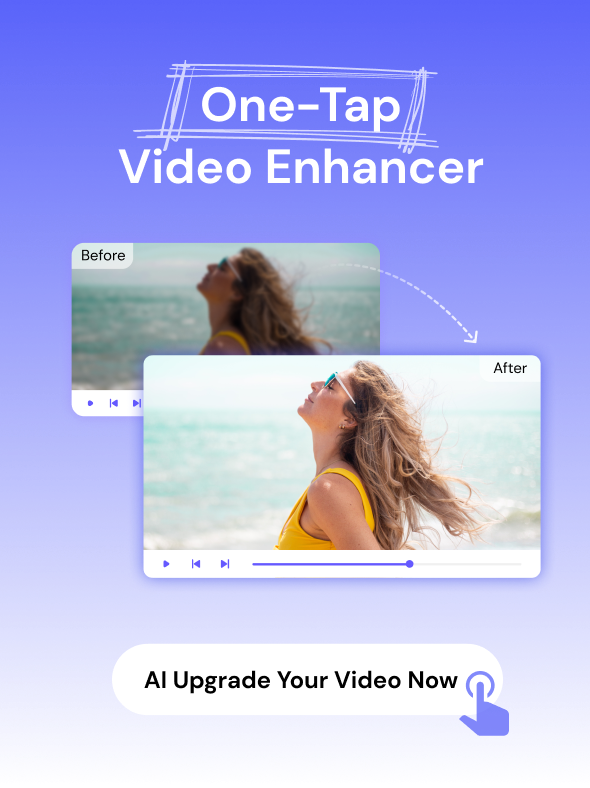PNG and JPG are the two most commonly used image formats over the net that have their own benefits and drawbacks. Depending on the size, quality, website layout, and other factors you can choose to use the format that best suits your requirements. Know in detail about JPG and PNG, differences between the formats and conditions when they are best suited.
Part 1: What is PNG?
PNG stands for Portable Network Graphics and the format was created as a replacement of GIF format but without any support for animations. This raster graphics file format uses lossless data compression and the format is majorly used for storing the graphics on the site. The format is also widely used in situations when part of the image has to be transparent. All web browsers and platforms including Firefox, IE, and Chrome allow opening the PNG files.
Pros:
- Lossless compression
- Support transparency
- Great for text and screenshots
Cons:
- Larger file size than JPG/JPEG
- No native EXIF support
Part 2: What is a JPG File?
JPG is an image format that is majorly used for images that are produced by digital photography. The format is widely used for storing as well as transmitting images on the net and is a good choice for the images that have complex shading and the colors. JPG uses lossy compression where your files can be compressed up to 10:1 compression ratio with very little loss in the quality.
Pros:
- File size small
- Integrated EXIF support
- Widely supported
Cons:
- Lossy compression
- No transparency support
- Not great for CMYK printing
Part 3: PNG Vs JPG?
a. Differences Between PNG and JPG
There are a number of differences when it comes to PNG and JPG format and there are a number of factors that need to be considered when choosing between PNG or JPG.
Quality: The major difference between both the format lies in their compression method. PNG format supports lossless compression whereas JPG supports lossy compression and thus the quality of JPG file is low as compared to that of PNG. With lossy compression, the size of a JPG size is smaller as compared to that of a PNG file.
The JPG format is suitable for use in photographs and images having lots of colors while a PNG file is best for transparent images, images with text and with line art. JPG does not support indexed color while PNG supports it for 1-8 bits.
b. Choosing Between JPG and PNG
1. PNG vs JPG for Web
When it comes to using of images on your website, blogs, and other sites, JPG works as a better option. Offering 10:1 compression ratio, JPG can reduce the file size considerably and thus the reduced data amount of image further makes the site responsive as the designs are loaded faster on the website. So when it comes to PNG Vs JPG size, the latter is the preferred choice.
On the contrary, if you want to use an image that features graphics, line drawings, or textual graphs on your site, PNG will be a better choice. Sites that use logo designs, transparent background and pictures with fade effects use PNG as their format.
Thus when it comes to the web, a combination of JPG and PNG can be used.
2. PNG vs JPG for Print
When it comes to print files when detailing is required, PNG is an ideal format as retains all the file details in lossless compression.
| PNG | JPG/JPEG | |
|---|---|---|
| Stands For | Portable Network Graphics | Joint Photographic Experts Group |
| MIME Type | image/png | image/jpeg |
| File Extensions | .png | .jpg, .jpeg, .jpe |
| Type of Format | Raster | Raster |
| Support for Transparency | YES | NO |
| Use For | Line art; images with text; transparent images | Photographs; photorealistic images with a lot of colors |
So when there is a shortage of space and quality can be compromised, JPG works best. In situations when transparent images are needed or there is required for detailed pictures, PNG must be preferred. In nutshell, JPG is best suited for photographs and real images while PNG is best for graphics, transparent and text-heavy pictures.
If you're looking for an easy converter tool for PNG to JPG, Wondershare UniConverter might be your best choice.
- · Support batch processing of pictures conversion.
- · Convert images to over 1000 formats, including JPG, PNG, BMP, TIFF, GIF, and others.
- · Convert photo to JPG or specific devices formats without any trouble.
- · Transfer converted files from PC/Mac to external devices easily via a USB cable.
- · Versatile toolbox combines Image Converter, GIF maker, video compressor and screen recorder, and others.


